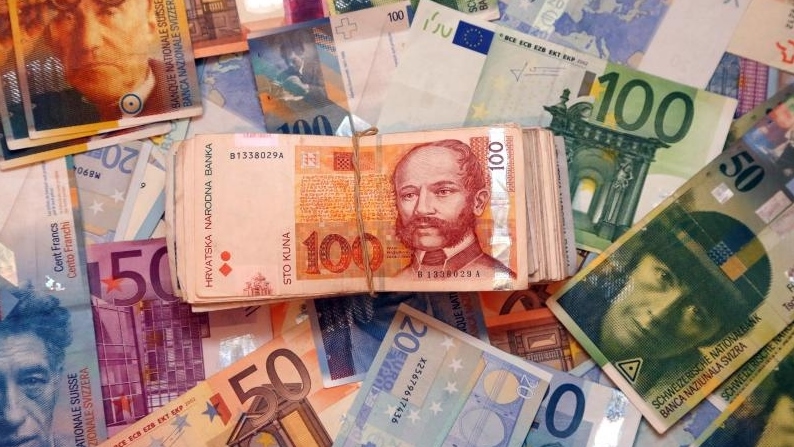
Gross financial assets of Croatian households increased by 7.4% in 2019 compared with the previous year, which is the fastest growth since 2014, the Allianz financial services company said on Wednesday while presenting the 11th edition of its Global Wealth Report.
Last year's increase was mainly driven by insurance assets, which rose by 14%, while bank deposits and securities grew by 5% and 6.1% respectively.
Croatian households' portfolios are dominated by bank deposits, which account for 49.6% of total financial assets. Insurance and pensions account for 26.8% and securities for 20.6%.
At the same time, liabilities increased by 6.6%, while net financial assets rose by 7.8%.
With net financial assets per capita of €11,809, Croatia dropped by one place from the previous year on the list of wealthiest countries to 32nd among some 60 countries analysed.
Although this is still considerably less than in Western European countries, Croatia is certainly among more successful countries in terms of financial development, Allianz said.
Global indicators show the biggest increase in wealth in the last ten years.
"This performance is nothing but astonishing given the fact that 2019 was marred by social unrest, escalating trade conflicts and an industrial recession. But as central banks reversed course and embarked on broad-based monetary easing, stock markets decoupled from fundamentals and soared by 25%, lifting financial assets in the process. The asset class of securities increased by a whopping 13.7% in 2019; never was growth faster in the 21st century," the report said.
"The growth rates of the other two main asset classes were lower – but still impressive: Insurance and pensions reached a plus of 8.1%, mainly reflecting the rise of underlying assets, and bank deposits increased by 6.4%. In fact, all asset classes clocked growth significantly above their long term averages since the Great Financial Crisis (GFC)," it added.
The report also revealed a growing gap between rich and poor countries. In 2000, net financial assets per capita were 87 times higher on average in the advanced economies than in the emerging markets. By 2016 this ratio had fallen to 19 and since then it has risen again to 22.
"Despite this progress, the world remains a very unequal place. The richest 10% worldwide – 52 million people in the countries in scope with average net financial assets of EUR 240,000 – together own roughly 84% of total net financial assets in 2019; among them, the richest 1% – with average net financial assets of above EUR 1.2 million – own almost 44%," Allianz said, concluding that "the superrich do indeed seem to be moving further and further away from the rest of society."
Kakvo je tvoje mišljenje o ovome?
Pridruži se raspravi ili pročitaj komentare



 Srbija
Srbija
 Bosna i Hercegovina
Bosna i Hercegovina
 Slovenija
Slovenija







